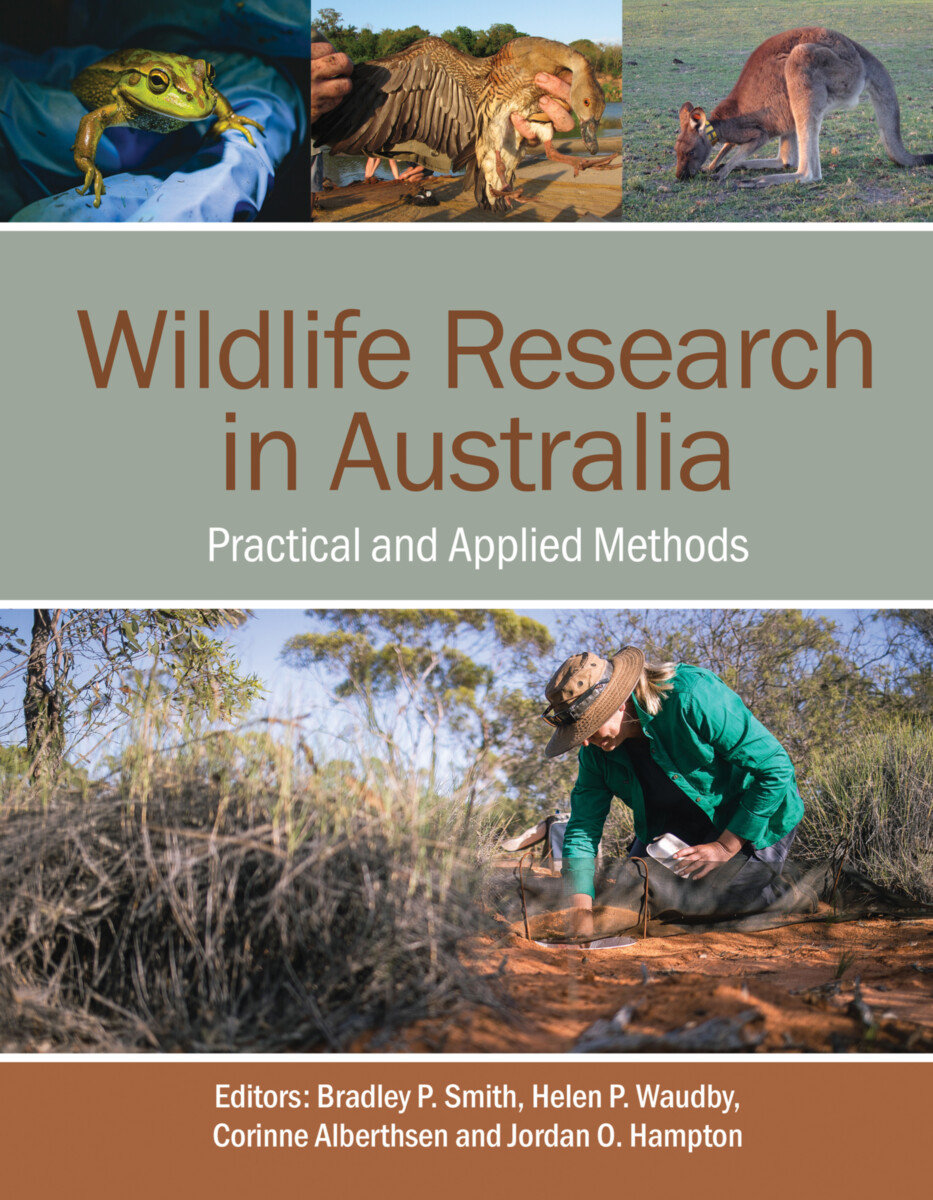EXCELLENCE IN SCIENCE PUBLISHING
Wildlife Research in Australia
Practical and Applied Methods
- Publisher
CSIRO Publishing - Published
2nd August 2022 - ISBN 9781486313440
- Language English
- Pages 656 pp.
- Size 8" x 10"
- Images 84 b/w photos, 14 illus
Wildlife Research in Australia: Practical and Applied Methods is a guide to conducting wildlife research in Australia. It provides advice on working through applications to animal ethics committees, presents general operating procedures for a range of wildlife research methods, and details animal welfare considerations for all Australian taxa.
Compiled by over 200 researchers with extensive experience in field-based wildlife research, teaching and animal ethics administration, this comprehensive book supports best practice research methods and helps readers navigate the institutional animal care approval process.
Wildlife Research in Australia will help foster a national approach to wildlife research methods, and is an invaluable tool for researchers, teachers, students, animal ethics committee members and organizations participating in wildlife research and other activities with wildlife.
Features:
- A guide to the practical and applied aspects of conducting Australian wildlife research.
- Provides guidelines on understanding and applying ethical requirements around wildlife research.
- Includes general operating procedures covering diverse research methods.
- Details animal welfare considerations for working with native and exotic Australian taxa.
- Designed for a range of wildlife researchers, from practitioners, to consultants, academics and animal ethics committee members.
Foreword
Preface
About the editors
List of contributors
Section 1: Animal ethics and Australian wildlife research
1. Legislation and key concepts
2. Animal ethics committees
3. Emerging and evolving dilemmas in wildlife research
Section 2: Research methods
4. Observing wildlife and its signs
5. Detecting and monitoring wildlife remotely
6. Studying wildlife from the air
7. Wildlife capture methods
8. Wildlife marking methods
9. Wildlife tracking methods
10. Citizen science and education
11. Deterring and repelling wildlife
12. Research methods for marine mammals and reptiles
13. Research methods for marine and estuarine fishes
14. Research methods for freshwater animals
15. Research methods for birds
16. Veterinary procedures for Australian wildlife
Section 3: Species profiles
17. Monotremes
18. Marsupial carnivores
19. Wombats, bandicoots, bilbies, possums and gliders
20. Koalas
21. Macropods
22. Eutherian carnivores
23. Bats
24. Ungulates, lagomorphs and rodents
25. Marine mammals
26. Reptiles
27. Amphibians
28. Crustaceans
29. Cephalopods
30. Marine fishes
31. Sharks, rays and chimaeras
32. Freshwater fishes
33. Perching birds and parrots
34. Raptors
35. Aquatic birds
36. Megapodes, bustard and ratites
Index
Bradley P. Smith
Dr. Bradley P. Smith is a Senior Lecturer in psychology at Central Queensland University. For the past 15 years he has been conducting research relating to the behavior, cognition and management of captive, domestic and wild animals, as well as the intersections between humans and wildlife.
Helen P. Waudby
Dr. Helen P. Waudby is a conservation biologist and Adjunct Research Fellow with Charles Sturt University. She has over 20 years' experience working with wildlife, ranging from desert rodents and marsupials to frogs and parasites.
Corinne Alberthsen
Dr. Corinne Alberthsen is a National Animal Ethics Coordinator. She is currently an executive officer to several animal ethics committees, and over the past decade has been a member of, or special advisor to, many others.
Jordan O. Hampton
Dr. Jordan O. Hampton is a Research Fellow at the Faculty of Veterinary and Agricultural Sciences, University of Melbourne, and an Adjunct Lecturer with the Harry Butler Institute, Murdoch University. He is a veterinarian with almost 20 years' experience working with a range of Australian wildlife.


